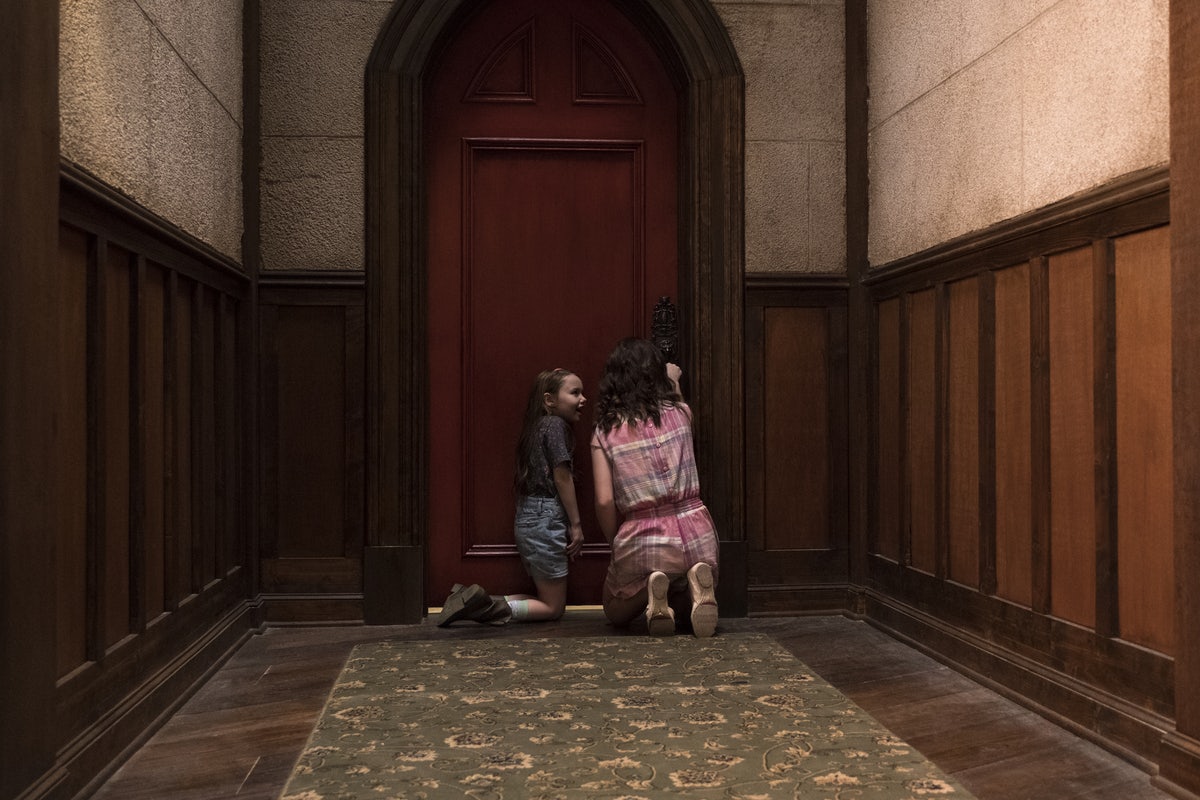Table of Contents Show
Madness has often been associated with mental distress in horror films, particularly through villainous or antagonist characters displaying common symptoms of psychological disorders: extreme mood changes, sudden laughter, amnesia, and delusions, among others. As media plays a role in shaping societal perceptions, this connection leads to negative associations with mental difference, as well as creates harmful stereotypes which isolate and stigmatize neuro-diverse individuals within our society. (( Saleh, Naveed. “How the Stigma of Mental Health Is Spread by Mass Media.” Verywellmind, 02 June 2020. )). Many overplay violence and aggressive behavior within these characters, and psychically linking their bizarre rage with a ‘corrupted,’ haunted house (think The Shining and Jack Torrance) is hardly new. More recently, though, we are seeing trends within the horror genre where mental health is being discussed more openly — where the lead characters, the protagonists, or antiheroes, are perceived as suffering from some sort of mental distress.
They are often called ‘crazy’ or ‘delusional’ when they start to see ghosts or other supernatural haunts, and characters are starting to link past traumas or a decline in mental health with these newfound delusions. But sometimes, the characters’ ‘madness’ becomes their tool for survival. Sometimes, these characters are seen as powerful. Netflix’s series The Haunting of Hill House (2018) takes this awareness a step further. Creator and director Mike Flanagan uses Shirley Jackson’s famed novel as a blueprint to create this truly unique ten-episode haunted house story; for this Hill House, the many ghosts aren’t simply angry or trapped spirits. As Steven Crain, the eldest sibling and one of the show’s protagonists, says in the series-opening, “A ghost is a wish.” In other words, the ghosts are both literal and metaphorical. They are visual, personal expressions of truths each character must face and accept about themselves — about their identity through mental distress, or the part of themselves or their experiences that are different from others or that challenge dominant perceptions of what is really ‘normal’ or ‘disordered.’
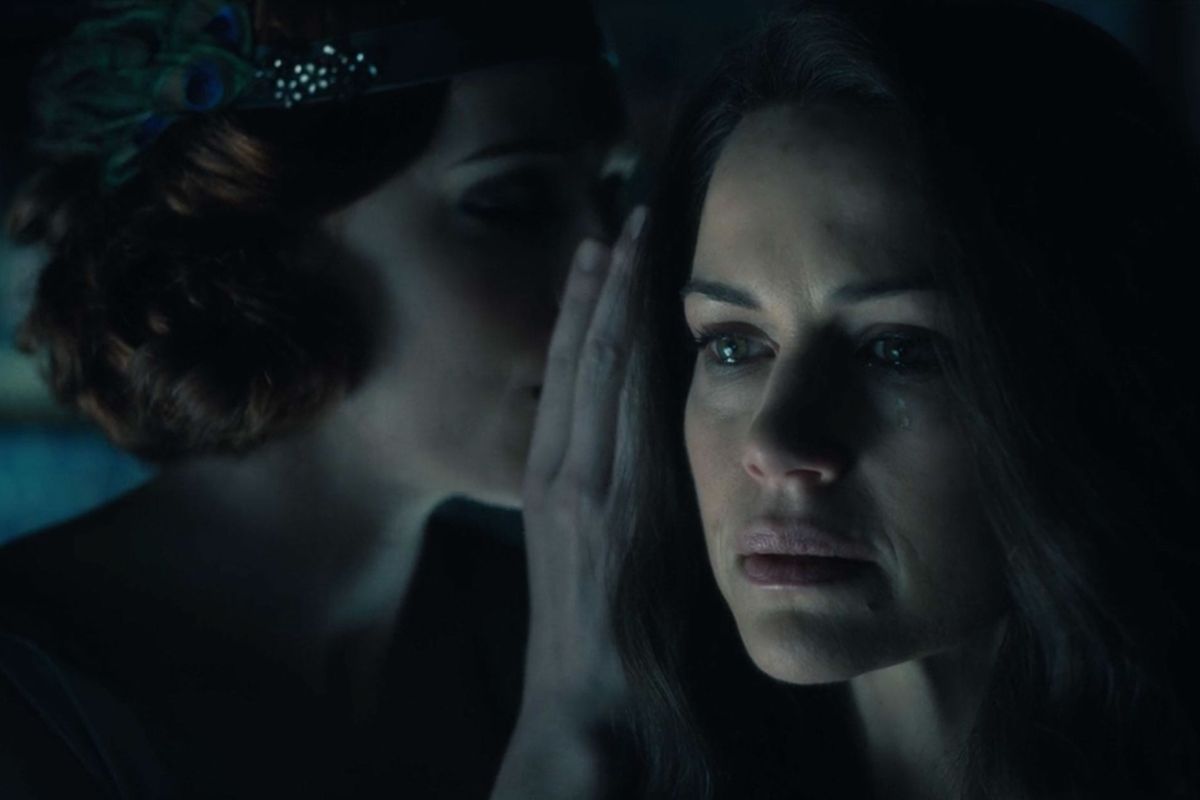
In Hill House, this connection to mental health is surprisingly inspiring; rather than conforming to the popular trope portrayed in many horror movies of showing mental illness as a euphemism for insanity, Hill House displays “illness” or neurodiversity as a source of agency and strength for the female lead characters. This portrayal aligns well with current views regarding the need to showcase mental “illness” in a new way. Therefore, it isn’t entirely understood and is often seen negatively, often coupled with fear and stigma. In this way, Hill House provides a more inclusive and complex storyline. To dissect this further, let’s introduce some post-grad vocabulary and highlight the advancing social attentions to mental health and mental illness today.
What Does Being “Neuro-diverse” Mean?
“Neuro-diverse” is a term used to refer to the variations in the human brain regarding how we think, behave, learn, feel, and other mental functions. (( Wiginton, Keri. “What Is Neurodiversity?” Webmd.com, 7, Apr. 2021. )). In other words, it refers to those whose brains are wired differently from what many would consider as “normal.” This means that most people experience the world a certain way, but others in society see things a little differently, as individuals on the spectrum or those who have post-traumatic stress, to name a few.
But it also relates to a growing movement in our society. There is a push to see these individuals, not as “sufferers” of a “disorder.” The term is a way for us to recognize their uniqueness, to perceive the strength and abilities these people have rather than their “deficits.” Instead of thinking of mental illness as something needing a cure, advocates for such individuals urge us to see their mental difference as simply a characteristic of the person, like having red hair and freckles. (( Brusie, Chaunie. “All About Recognizing a Neurotypical.” Healthline.com, 14 July 2017. )).
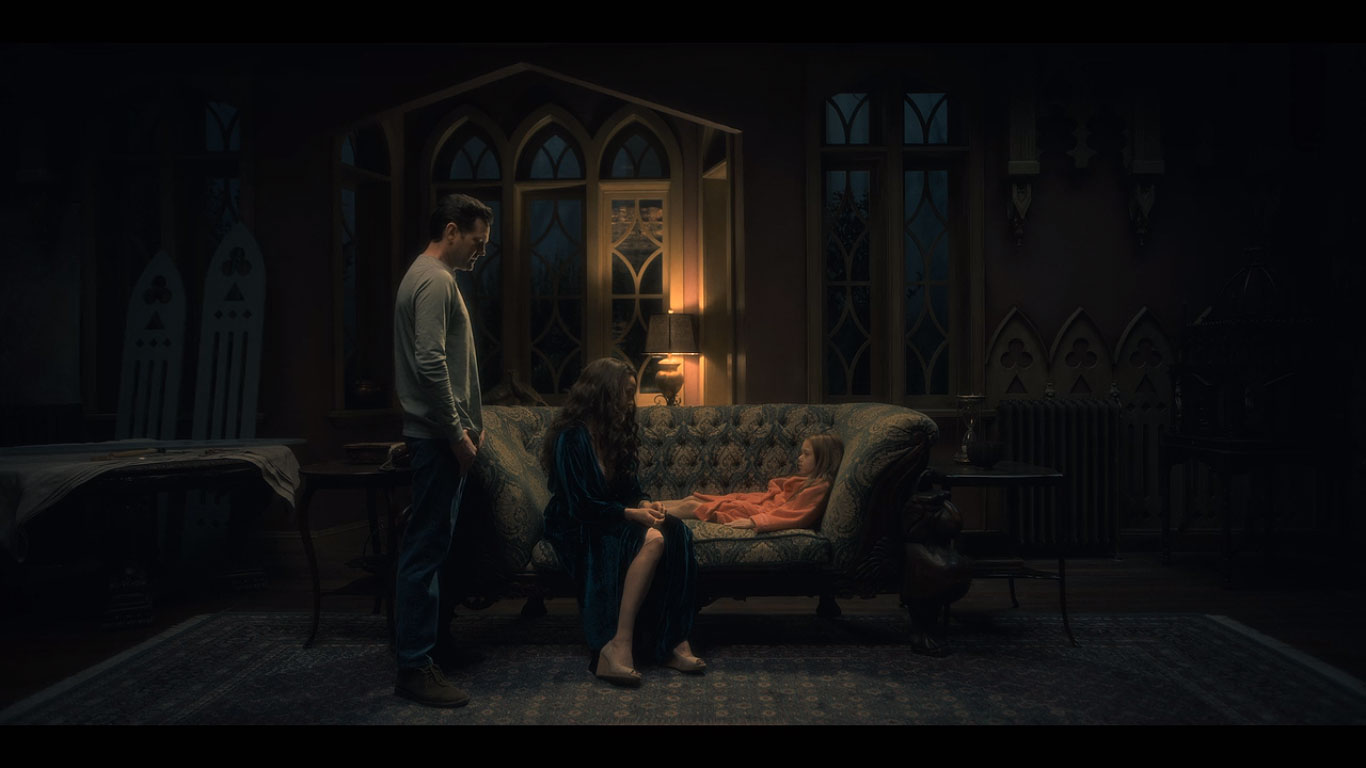
By the same token, “neurotypical” is a term to describe individuals with what is considered typical neurological abilities. In the same spirit, there are theorists and advocates of neurodiversity who believe these mental differences should be respected rather than criticized, as it is often presented negatively through media-based outlets. So, the term “mad” is sometimes used as an umbrella term for those who identify as neuro-diverse and who see their difference as not wholly bad or good; it all depends on how the individual interprets their experiences. For instance, manic states can result in moments of artistic creativity. (( Rashed, Mohammed. “Mad Pride and the End of Mental Illness.” blog.oup.com, 27 June 2019. )). “Mad” becomes a term that rejects the negative connotations that “illness” or “disorder” often presents. In Hill House, once the women begin to recognize these strengths in their cognitive abilities and address them openly, once they start to interpret their experiences differently from the norm, then they can finally accept themselves as well as the traumas of their past which seep largely into their present.
How Does Hill House Connect To Neurodiversity?
In line with the idea that madness or neurodiversity can only really be understood through the eyes of those who live it, (( Beresford, Peter. “‘Mad,’ Mad Studies and Advancing Inclusive Resistance.” Tandfonline.com, 18 Nov. 2019. )). Hill House highlights the lives and varying neurological ‘sensitivities’ of its female characters. And in this variation of Hill House, the plot hinges on these ‘mad’ abilities of the female leads: Eleanor “Nell” Crain (Violet McGraw/Victoria Pedretti), the youngest, with her sleep paralysis, Olivia “Liv” Crain (Carla Gugino), the mother, with her vision-based migraines, and Theodora “Theo” Crain (Mckenna Grace/Kate Siegel), the middle child, with her psychic-sensitive skin and touch.
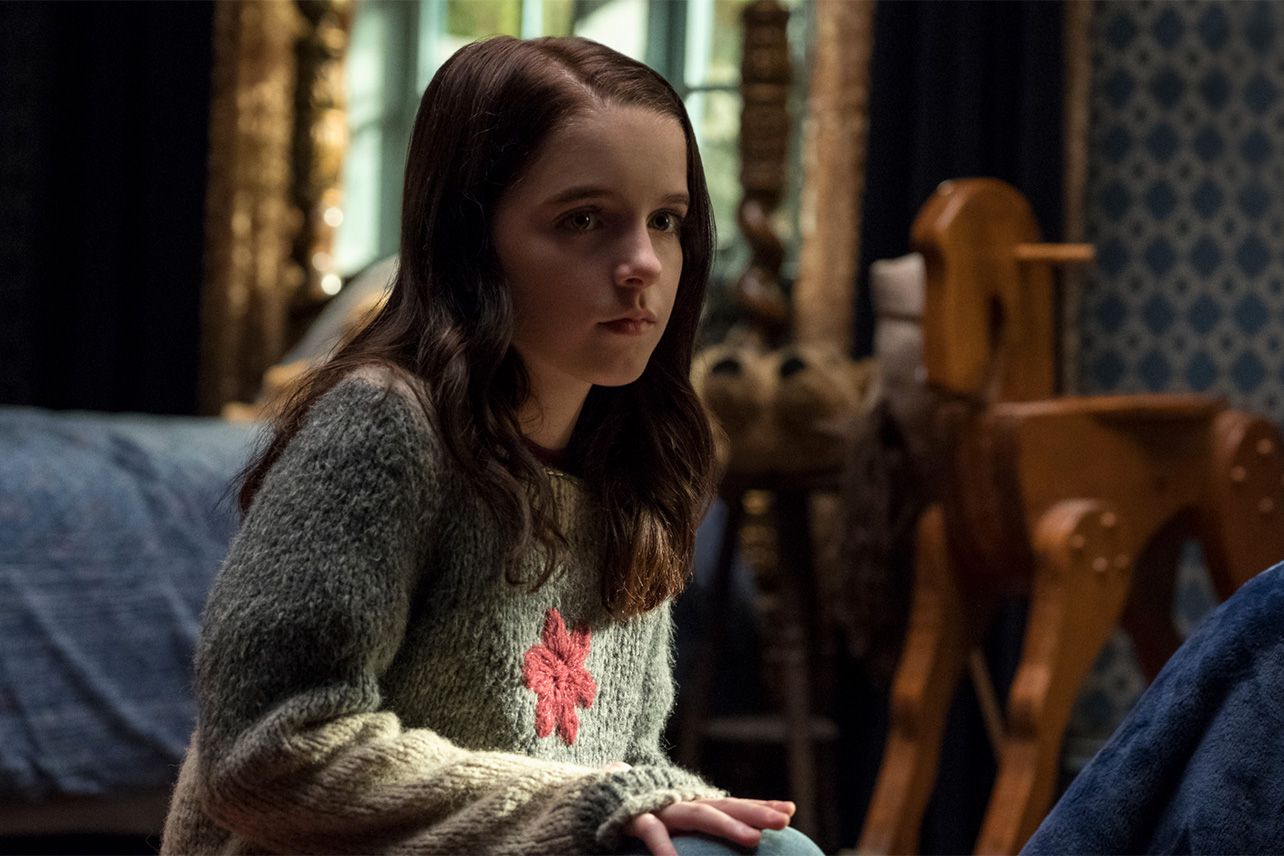
In comparison with all cinematic genres, horror takes the lead in featuring more women than men, according to Google and the Geena Davis Institute based on studies they conducted regarding female screen time. Though, yes, these films often show women being killed, traumatized, and brutalized, we also see those instances where the woman’s supposed “delusions” are confirmed or recognized (though, often, when it’s too late). In this way, despite the blood and murder, this genre is rather appealing to a female audience. Why? Because they showcase the lived experiences of women. And for Hill House, this confirmation extends to individuals with mental differences or experiencing mental distress.
The Crain Women: Sanity Through Sensitivity
The focus on the “sensitivities” highlighted within the women seems to begin with Olivia and her conversation with a younger Theo in the episode “Touch.” The show weaves together memorable moments among the Crain siblings; each episode centers on a particular sibling. The scenes shift between states of the character’s current, adult life with memories — little flashes of experiences — from their past as children. In “Touch,” the episode centered on Theo’s life, Olivia gives viewers more insight into her daughters’ neuro-diverse experiences, as well as her own. These differences are distinct in each character, yet Olivia notes that these abilities began with their grandmother, who, as Olivia tells us, “was sensitive” like herself but in a way similar to her daughter Theo.
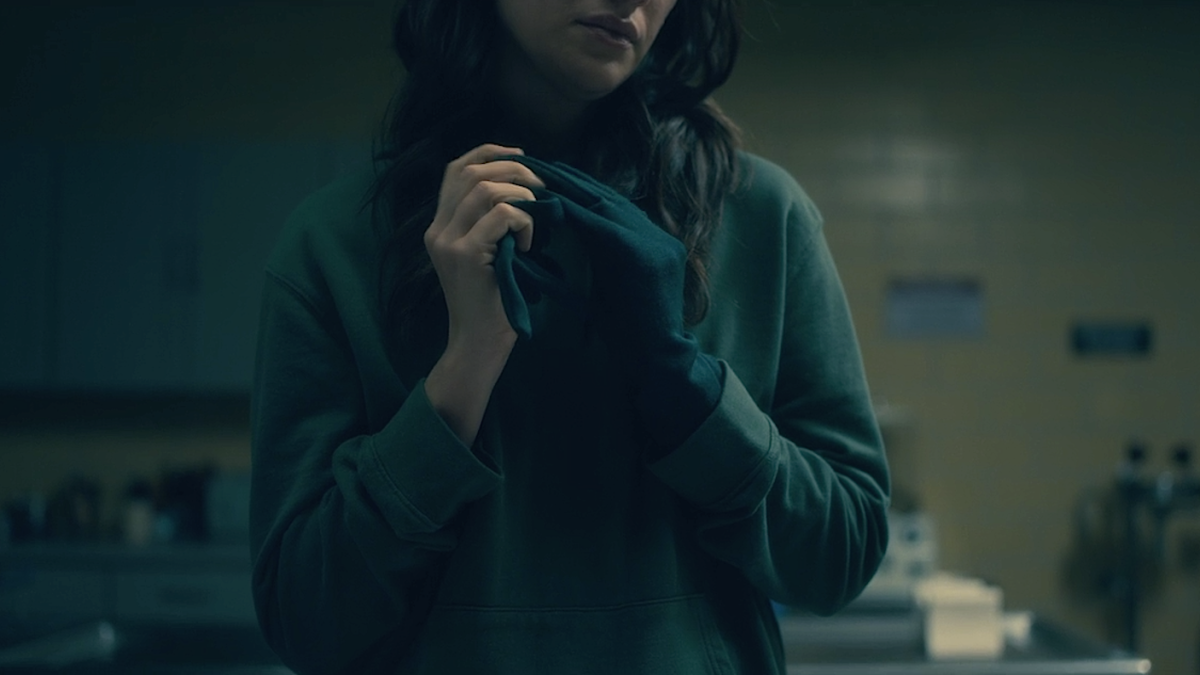
This relationship to psychiatric “disorder” is further acknowledged in this scene. Scientists have long recognized that certain mental differences have a common genetic link and tend to run in families. It is telling, though, that Olivia never speaks of mental distress directly; she starts to tell Theo that “Sensitive people, they sometimes need, well…” and trails off, but not before sliding a box, containing simple, fashionable gloves, to Theo as a subtle nod to her difference. The gloves become a way for Theo to handle or more easily channel her distress. Yet, it is more telling what Olivia does say after giving them to her. She says,
“If you are feeling overwhelmed and you think nobody will understand, you can talk to me, about anything.”
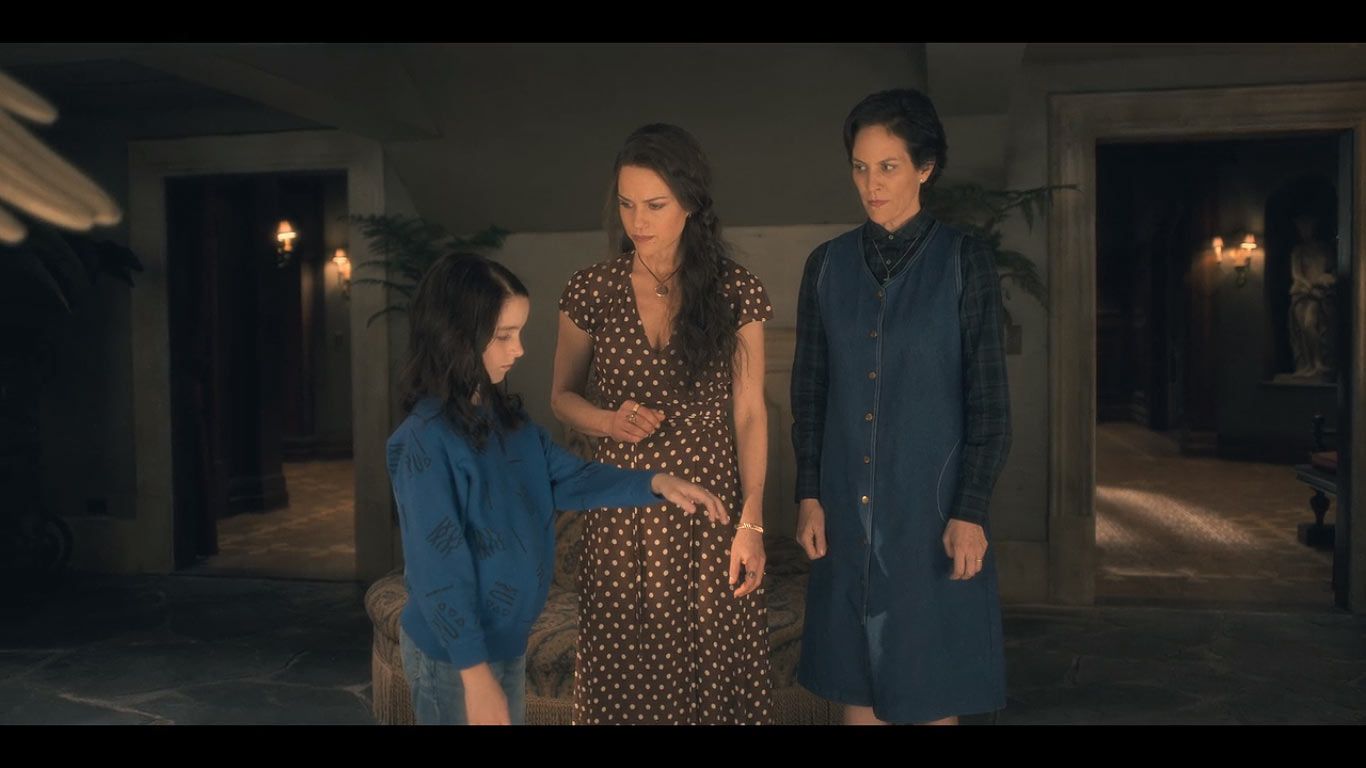
For many of us experiencing mental distress or difference within our lives, we reach a point of helplessness. We recognize that neurotypical people can’t fully understand our own unique way of experiencing the world around us. And sometimes, this isolation is, as Olivia notes, “overwhelming” for many. This scene, particularly, aptly highlights one of the themes Hill House delves into. This modern take on female gothic — and on madness as a general concept — recognizes the need for a broader recognition of these human experiences as well as the need for a kinder vocabulary. Rather than “crazy,” “insane,” or “delusional,” Olivia calls them “Sensitivities,” which elicits more positive feelings around it. Much better; it allows her to give Theo a sense of agency and power rather than taking it away, since demeaning terms like “crazy” give negative connotations and place “blame” in a sense on the individual themselves, even though mental distress is never that individual’s fault.
Olivia And Her “Color Storms”
For Olivia herself, her distress takes the form of migraines, or her “color storms,” as her husband Hugh affectionately calls them. Again, the language paints a much better picture for viewers. It becomes a way to better describe and help wider audiences understand the idiosyncrasies of each neurological illness. Our society often explains migraines or frequent headaches as solely negative, debilitating. And, of course, they can be. But have they ever been compared to a colorful storm? In this way, an audience starts to see the migraine as something both intense and intensely vivid.
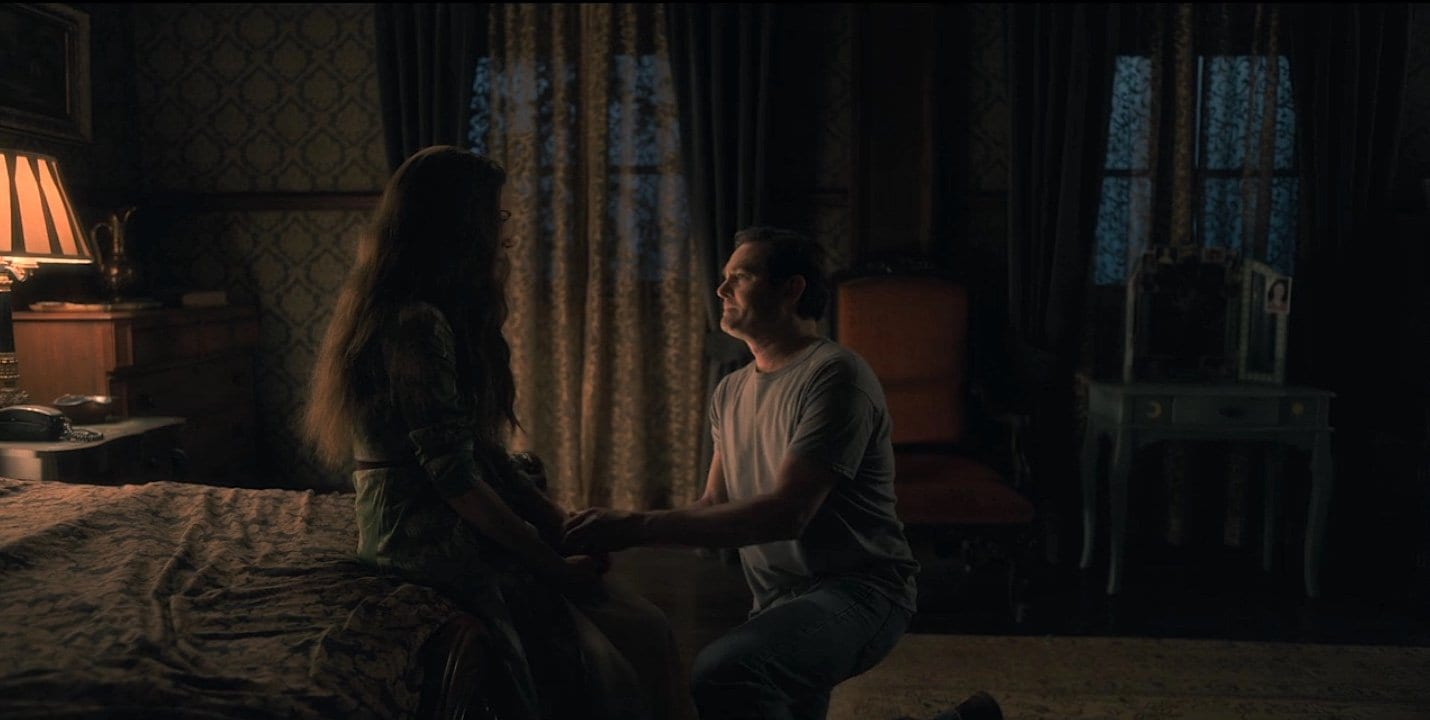
What she experiences seems common enough, as there are many who suffer from chronic migraines in our society. However, migraines are affiliated with mental illness since the experience is linked to genetics and aspects of the brain; scientists are recognizing that the cause of migraines involves chemical changes in the brain. The triggers for migraines can even be passed down from our parents. And, interestingly, women are more likely to suffer from migraines than men.
So when Olivia talks about seeing colors or flashes of images during her migraine episodes, it seems less to do with insanity and more to do with the need to be understood. She wants to paint a picture for her husband of what she experiences, all at once, from all the senses, during her migraines. The use of color helps to do that for her. In one’s society, colors have always been linked to certain emotions and alternative meanings (like how a wedding dress symbolizes purity and the white color conveys peacefulness in Western culture). This focus on migraines in Hill House is important; it shows how neurotypical people, or people whose neurological abilities are considered “normal” in our society, like her husband Hugh, can never fully understand these internal experiences, especially when the language isn’t there.
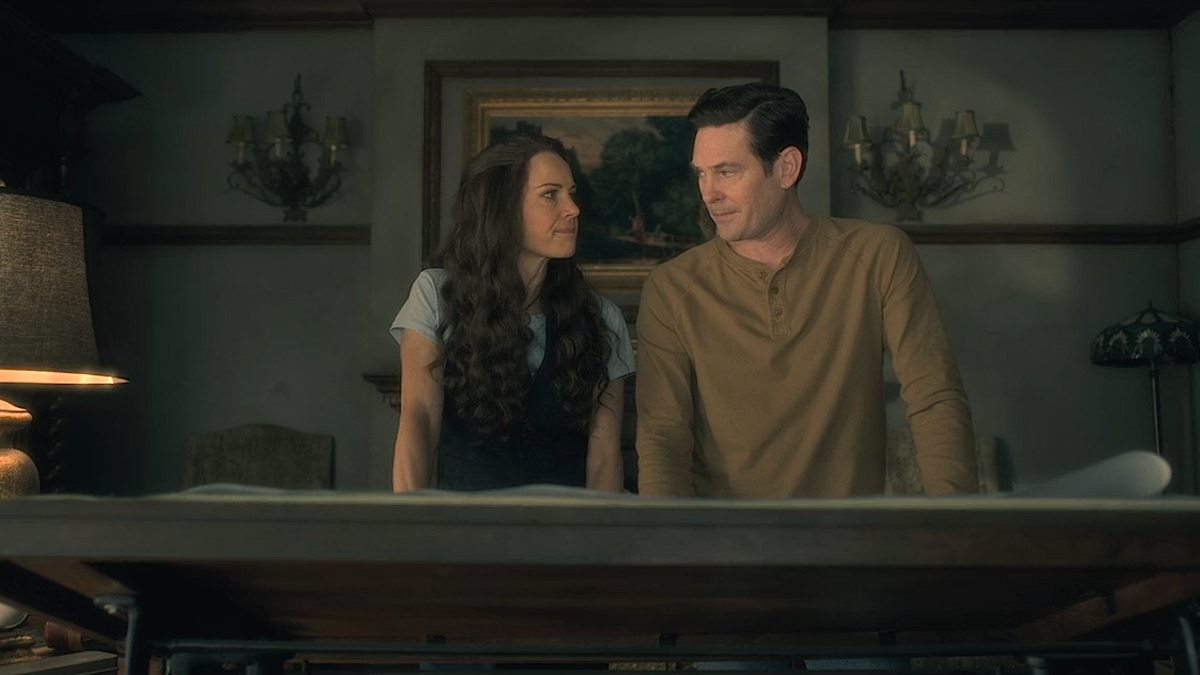
But the most dangerous part is when he stops really hearing her. During episode nine, following a violent outburst by Olivia involving a broken vanity mirror, Hugh talks to Olivia about her changes in behavior. When he attempts to diagnose her, chalking it up to stress and tiredness, Olivia abruptly disagrees. She says,
“No. I’m not. I was when we got here. I was all the things, all the familiar things… But all those colors, they’re all gone now, Hugh. And there’s only one left. I’m scared. That’s all I am. There’s nothing else.”
Again, her feelings and thoughts become associated with colors. But this time, Hugh’s solution is to isolate her from the physical stimulations: the house, the children, himself. In other words, his “fixing the problem” involves separating her from his reality, or elements of their life that he can see, that he can understand. But what Olivia needs is separation in a psychological form. She wants to “get out of her head.” She tells audiences earlier that Hugh keeps her “grounded.” But here, Hugh’s dismissal is triggering. For neuro-divergent people like Olivia, this kind of stigma (isolation, lack of understanding) can lead them to retreat inside themselves. But this “headspace” is where Olivia began to lose herself. And, in the end, it is where she cannot escape: cue Olivia’s ghost, in the final episode, staring down at her dead body and exclaiming to Hugh that she is having the “strangest dream.”
Theo’s Psychology
As an adult, Theo chooses to work in the field of psychology, focusing on the mental health of children. In one of the most distressing of scenes, she uses her sensitivity to uncover why a little girl was manifesting a monster in her foster home; as Theo lays upon the foster family’s couch in their basement, Theo’s emotional and physical reaction simulates a rape scene, and Theo realizes that the little girl’s “monster” is the foster father who had been raping her. In the moments when Theo chooses to embrace her sensitivity, even though it often leads to episodes of distress, the revelations they bring have value. And yet, towards the end of the show, Theo’s intense emotional description of her experiences being “sensitive” in a conversation with Shirley becomes a focal point to her own narrative:
“And I’m just, I’m just floating in this ocean of nothing, and I wonder if this is it, if this is what death is, just out there in the darkness, just darkness and numbness and alone, and I wondered if that’s what she felt and that’s what Mom feels, and it’s just numb and nothing and alone…” And she ends her dialogue with “That thorough fucking shame was so much better than that horrible, empty nothing.”
Theo’s words may resonate in another way. Her life revolves around mental health, around diagnoses and treatments and medications, working as a child psychologist. Here, she seems to say that it is better to feel than to numb yourself to others. Perhaps this scene represents an argument against overmedication. Maybe she’s taking a stand for those who face a system that serves medication or a numbing “fix” as a substitute for care and acceptance.
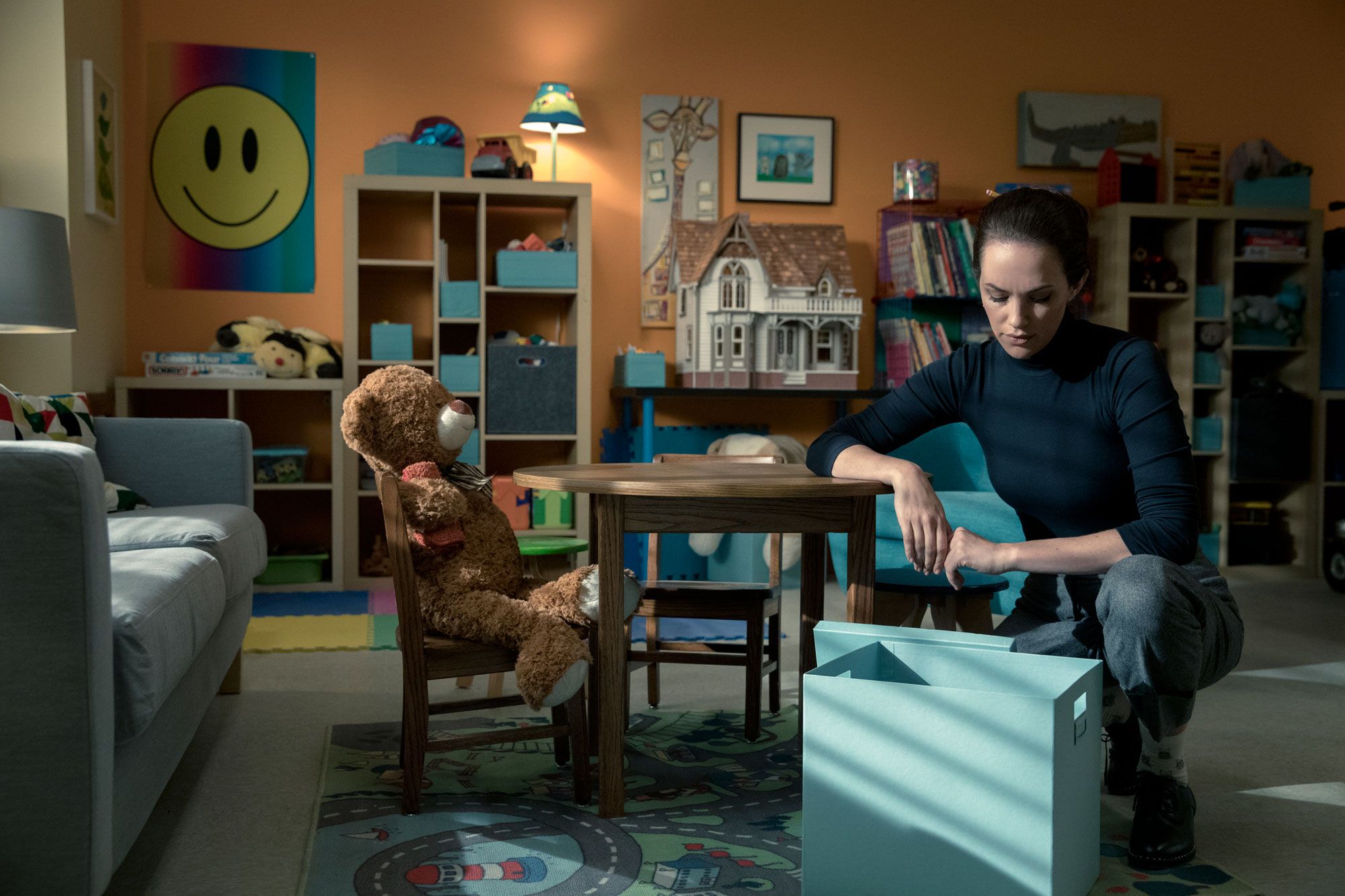
In one of the final scenes focusing on Theo as an adult, audiences watch as she finally decides to embrace her sensitivity, and she tosses her gloves in a trash can while she’s finishing packing and moving her things. She chooses to move out of Shirley’s guest house, and this transition shows how her emotional walls are gradually crumbling down. But the gloves themselves are the strongest indication of this change. With her physical-neurological ties to empathy, Theo accepts what she used to consider a crippling vulnerability. The gloves act as a “mask” over her difference and, by permanently discarding them, she reminds viewers that real strength comes from acknowledging neurological differences and accepting that mental “illness” is something that can be beneficial in particular ways or potentially self-destructive.
Nelly And The Bent-Neck Self
Perhaps the most haunted of all the Crain siblings is Nell. Before all the other children, Nelly sees ghosts. But not all ghosts — her ghost — the ghost of herself. At a young age, Nelly starts to experience night terrors and sleep paralysis, following her first discovery of the Bent-Neck Lady — a specter that haunts her into adulthood. But in a surprising twist, we discover that the ghost is Nelly herself, following her own suicide. For viewers, this haunting becomes a visual way to better understand the experience of people living with mental distress. She becomes her own haunt, and she realizes — too late — that her “delusions” were in fact incredibly relevant and significant to her life and reflective of her future. In this way, audiences are shown that mental difference is an alternative reality — a reality that shows us the power and boundless capabilities of the human mind.
Like other ghost stories, Hill House shows characters who first attempt to rationalize their supernatural hauntings. This often leads to a character’s undoing or death. But, if they accept the horror or trauma in their lives, or, rather, accept that there’s a part of themselves that interprets the world differently than others, that their lived experience, the way they respond to the world, though against the norm, is not “insane” but present, and real, then they can finally allow themselves to heal. And in our society, we must realize that in order for someone to heal, we have to allow the ghosts to exist. We first have to admit that our “illness” isn’t just a symptom, but very, very real.
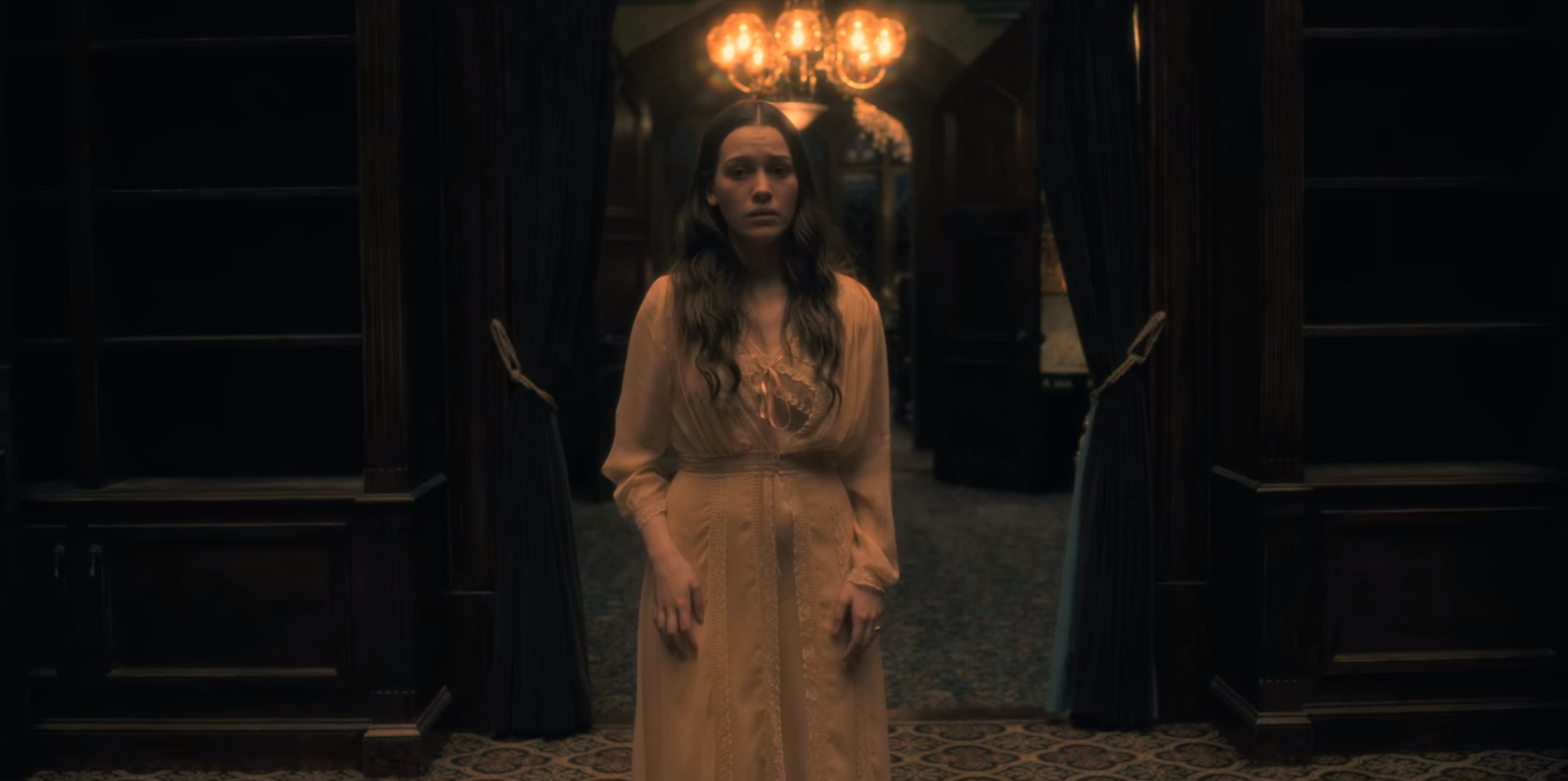
The show aids in reminding us that mental difference and distress, in all its forms (grief, loss, trauma, disability, disorder, anxiety), should be seen — and accepted — simply for what it is: real, valid, and not inherently negative. It is visible. And, despite what media often portrays, it is transformative. When one’s madness is embraced rather than repressed, it can lead to acceptance, healing, and being authentically yourself. For many, it simply is. For Nell, Liv, Shirley, and Theo, madness becomes power. And power becomes strength. Steve tells viewers that a ghost is a wish; perhaps the ghost of mental illness is a wish for its exorcism, but we cannot banish an inner part of ourselves. What’s harder to accept than the ghosts — for all the Crains, for all of us — is that, try as we might, we cannot “fix” mental difference. But, as a society, we can believe in it.
What Can We Learn From The Crain Women?
In short, Hill House reminds us that not everyone experiences the world the same way, and madness can be seen as granting a pearl of alternative wisdom, or as a “dangerous gift” that provides powerful insight and agency which neurotypical people cannot obtain. There is, of course, no way to deny the fact that hallucinations, extreme mood changes, and other occurrences can become a detriment to one’s life, as Hill House makes us all too aware of the instances of suicide in the series. But the characters also show us the transformative power of embracing one’s identity and the need to be mindful of how, sometimes, being too “sane” — too focused on conforming to social norms and “fixing” those who don’t — can often be just as destructive. We all have an obligation to be kind and accepting. And it starts with understanding what it means to be human.
